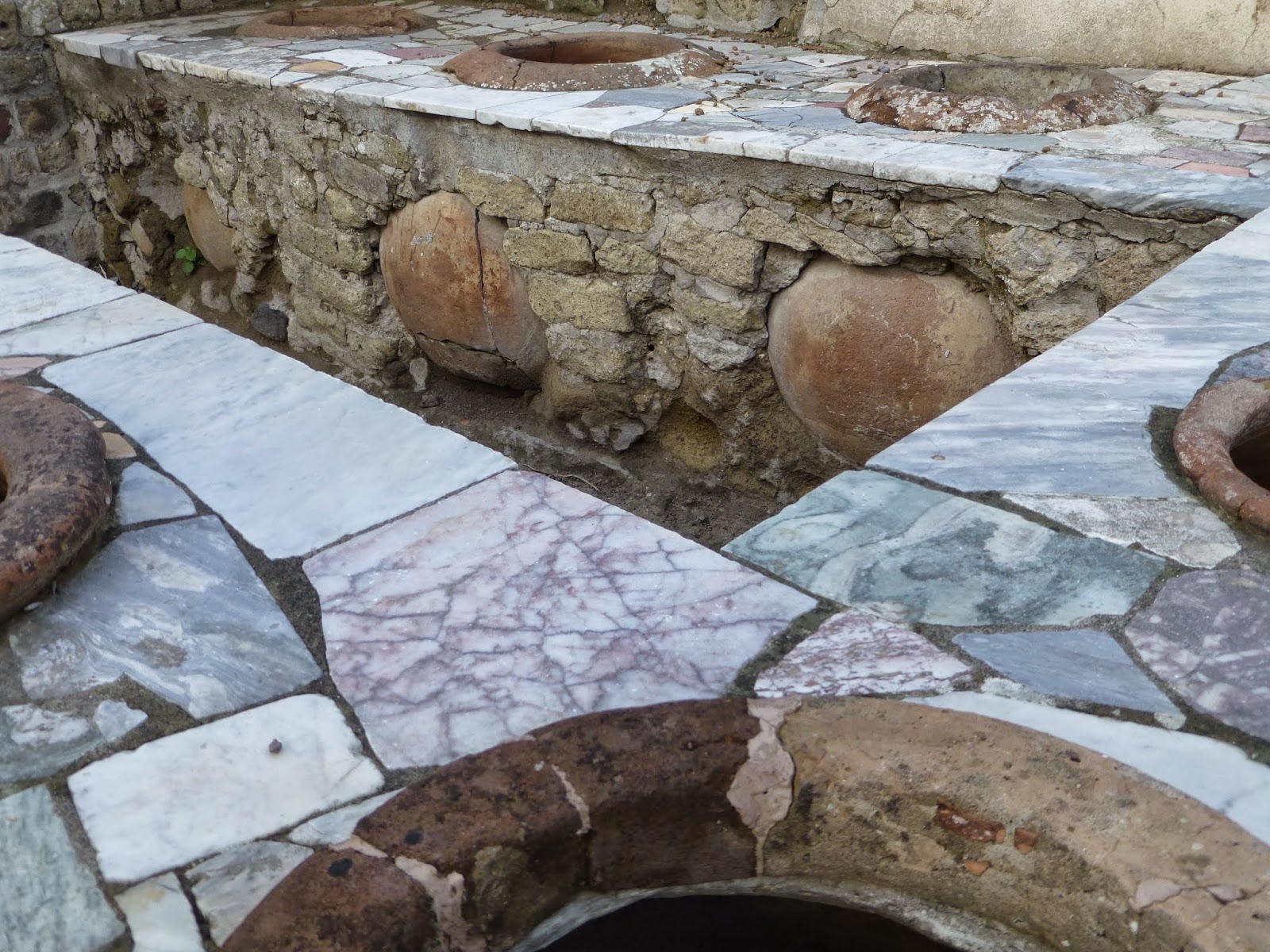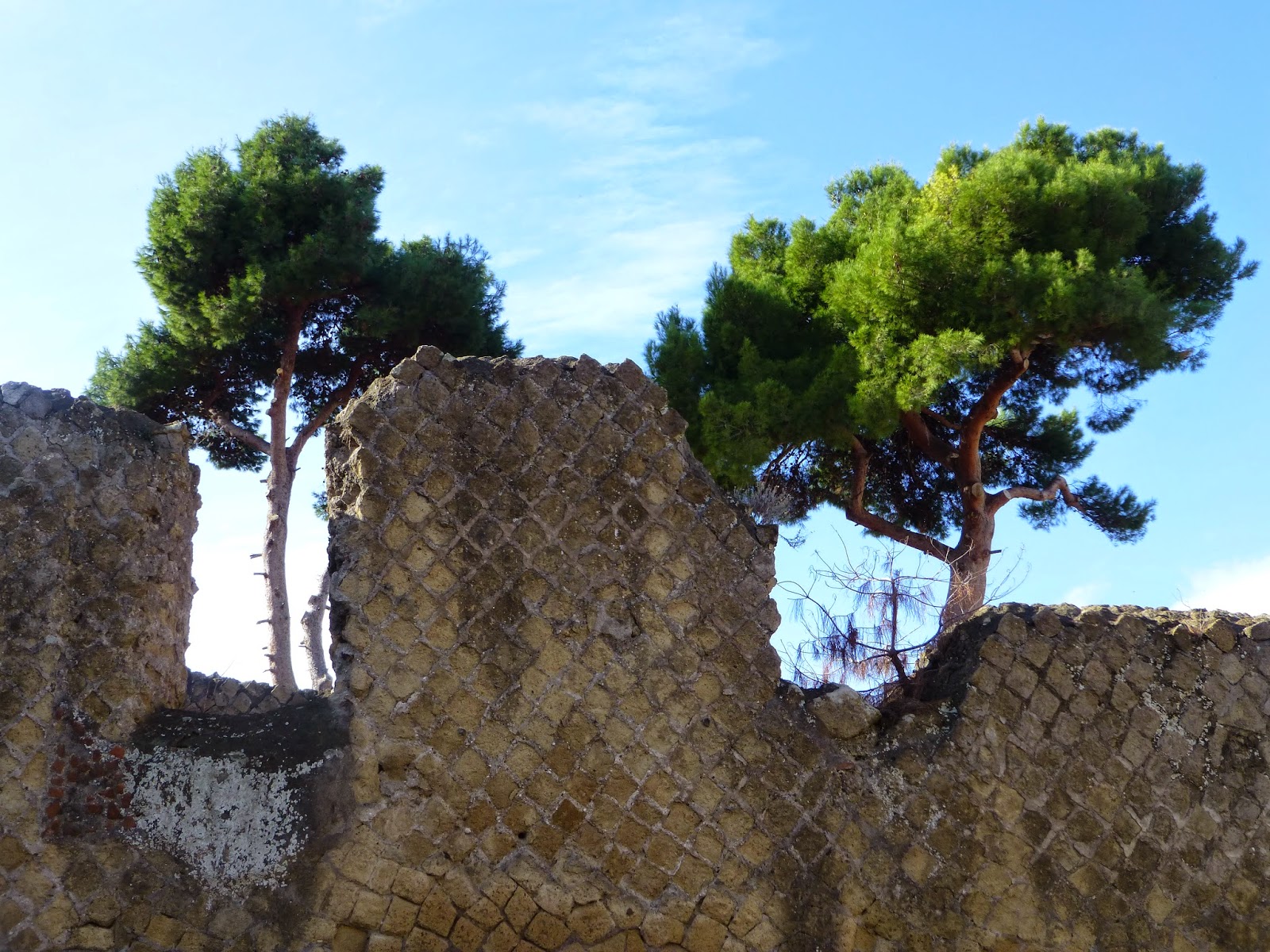I have heard it said that Herculaneum is better to see than Pompeii. Well I did the two on consecutive days so could do the comparison. Of course the real point is that they are just different.
Herculaneum is much smaller - a much smaller town. Its more compact so less tiring, but then again if you like wandering round ruins the more the better. The frescoes are by and large better preserved here. Its also supposed to be less visited and so quieter, although frankly in November this isn't a serious concern. There weren't many tourists in either place, although I did come across some little guided tour groups in Pompeii, but none here, apart from one school party that I tried to stay at the opposite side of the site from at all times.
One of the downsides is that the modern town of Herculaneum is visible all the way round
There is a bridge over the site before you get to the main entrance, from which you can see pretty much everything of the town, or at least as much as they have excavated.
As you can see, the streets were hardly crowded with visitors.
Now I have tried to take photos of the more attractive parts. But here is an example of what is wrong with the running of both Herculaneum and Pompeii. Can you design a less fitting bit of support for a major monument? Scaffolding poles and sticky tape?
The House of Augustus is one of the best preserved in terms of the amount of the fabric of the building still standing and the preservation of the painted walls.
The town has numerous water founts - no doubt highly desirable in the hot summers, as were the internal courtyards.
Originally it was thought that the residents of Herculaneum escaped, but later excavations found skeletons in caves etc. They were cooked alive.
And there is a very well preserved bath complex. Nice mosaics and vaulted barrel ceiling.
Now one of my moans about Naples and here too is the appalling graffiti. Its one thing to scrawl over the walls of some apartment block, but even here, on walls that survived 2000 years can you really be crass enough to want to scratch your name? Just to show what a compete and utter arse you are?
 |
| This mosaic seems to include various every day objects, forks, vases and , err, cock and balls? |
finer before the corrosion. Nevertheless I doubt they would have let in an enormous amount of light.
...and even the wooden doors
A nice little orchard






































































































































No comments:
Post a Comment